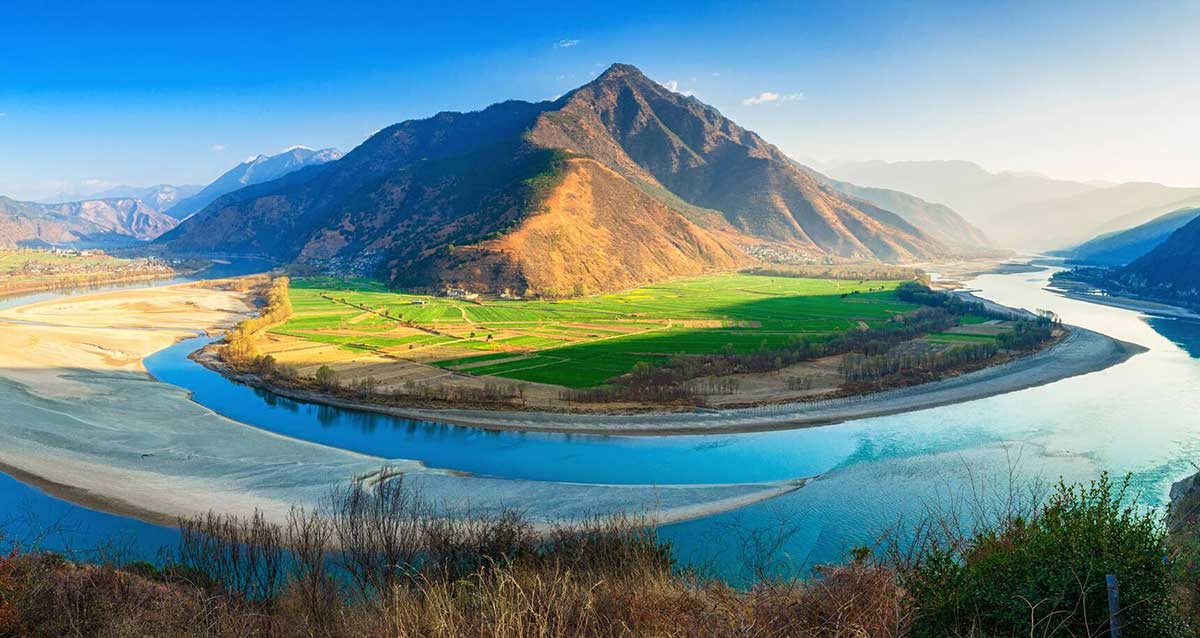
Rivers are among the world’s greatest and most sublime wonders, flowing throughout the planet while providing a vital habitat for species both large and small. There are an incredible 150,000 named rivers across the planet, and possibly even more that we don’t yet know about. But have you ever wondered which rivers are the largest and most impressive of them all? From the colossal Nile River and the incredible Amazon to the almighty Congo, these are the top 6 largest and most vital rivers that keep our planet surviving and thriving.

Today the Nile River is recognized by the Guinness World Records as the longest river in the world. It is approximately 4,32 miles, or 6.650 kilometers long. The Nile flows through many nations before spilling out into the Mediterranean Sea. Along this route the Nile makes its way through or along the border of several different African countries, including Uganda, Ethiopia, Kenya, Tanzania, Egypt, Sudan and South Sudan. Meanwhile, tributaries that feed into the river include the Blue Nile, the White Nile and the Atbara. Given the extensive distance it travels, it is no surprise that the Nile is a major water source, particularly for farming and irrigation. It is also home for a wide variety of wildlife including hippopotami, Central African rock pythons and Nile crocodiles.
2. The Amazon River (6,400 km)

At 6,400 kilometers long, the Amazon River is extremely close in length to the Nile River. However, the Amazon River has by far the largest volume of freshwater in the world, gushing out at least 200,000 liters into the ocean each second of the day. From its headwaters in the Andes Mountains of Peru, the Amazon River runs along the edge of South America eastwards, eventually making its way into the Atlantic Ocean. Because of its sheer volume of water, the Amazon River impacts the sea level of the Caribbean - as its water is carried into the Caribbean islands, the sea level rises by 3cm.

Coming in as the third longest river in the world, China’s Yangtze River is 6,300 kilometers long. It flows throughout most of Asia, and creates an unofficial border between North and South China, making it by far the longest river in Asia. In fact, around one third of China’s entire population live in the river basin of the Yangtse. Rising in the mountains of the Qinghai province on the Tibetan plateau, the Yangtze flows along its vast distance to the East China Sea. More than 350 types of fish live in the river, along with 280 species of mammal, 166 types of reptiles and 762 varieties of bird, making it one of the most impressive wildlife sanctuaries the world has to offer.
4. The Mississippi-Missouri River (6270 km)

The Mississippi-Missouri River might be better described as a river system than a river per se, because it is made up of the Missouri and Mississippi rivers that flow into one another, hence they are often referred to as one major river. This vast waterway spans an impressive 6270 kilometers, making it by far the longest stretch of water in the entire United States. It will come as no surprise that this extensive area of water sustains a vast array of wildlife including alligators, turtles, migratory birds and fish, particularly in the Mississippi Delta, which holds a series of precious ecosystems.
5. The Yenisei River (5,500 km)

From its headwater in northern Mongolia, the Yenisei River runs through Central Siberia into the Kara Sea, which leads out into the Arctic Ocean. Again, this waterway is made up of several rivers that flow across Russia and Mongolia, which, when measured together, span at least 5,500 kilometers. The river provides a vital lifeline for much of Russia’s population, supporting cattle ranching, agriculture, fishing and more. The river is also an important transport system, and contains a series of hydroelectric power stations that generate vast amounts of power.


